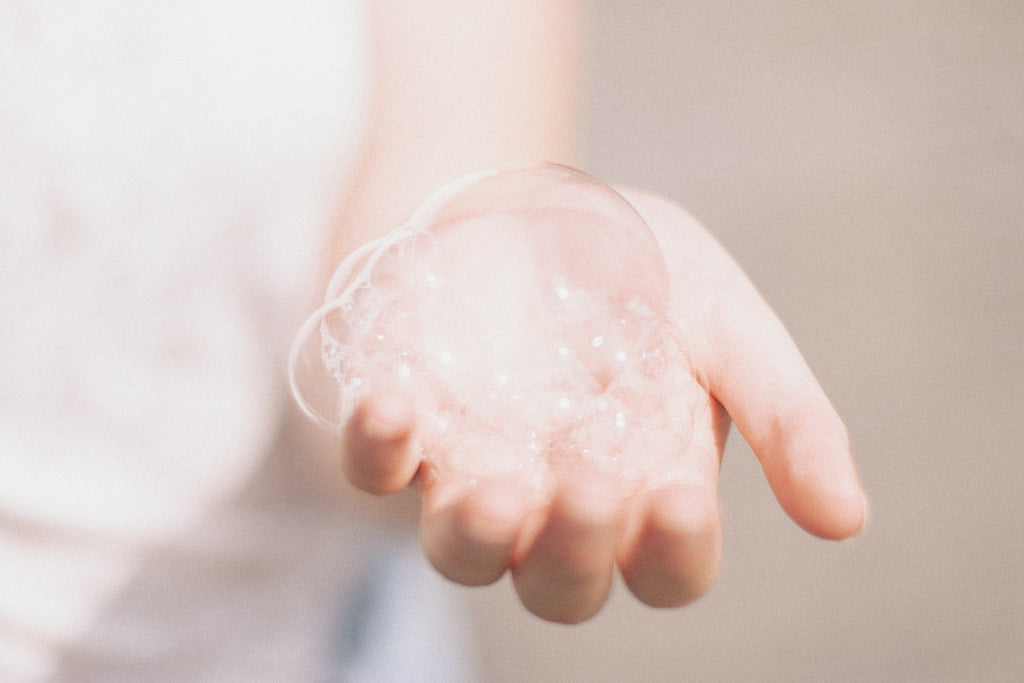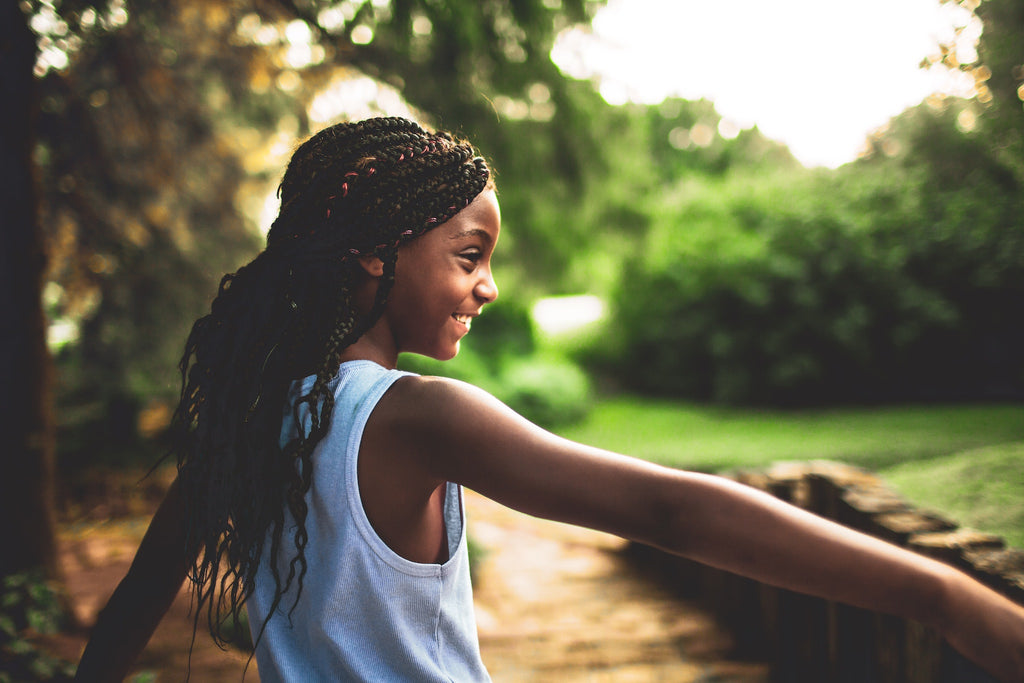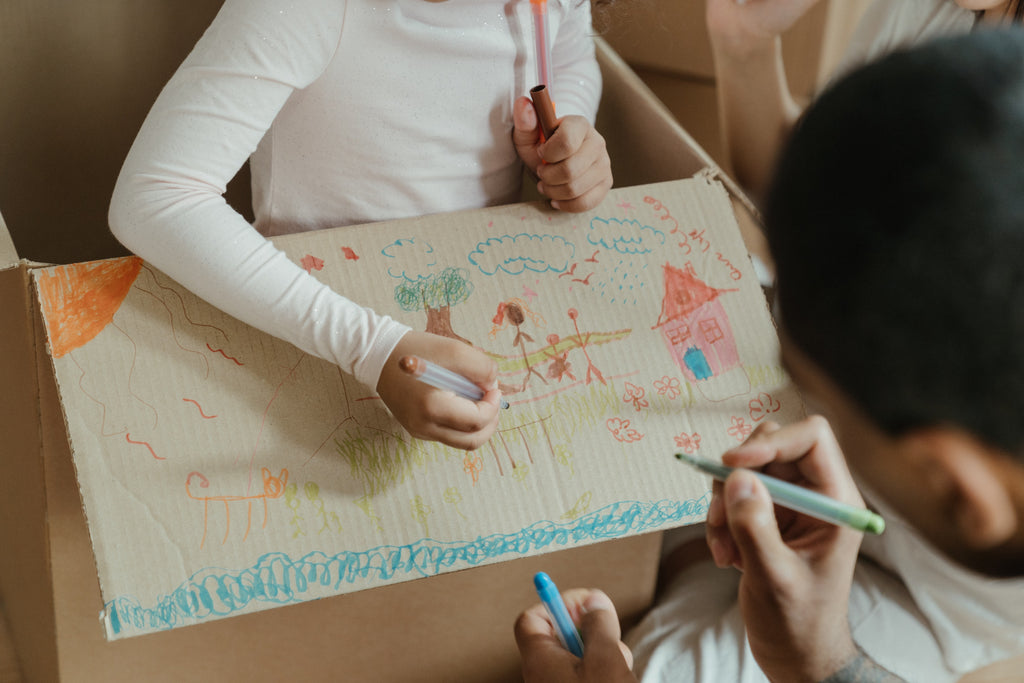
So you wanna raise an eco-warrior? As a mom of a four-year-old and a two-year-old, I’ve learned that the easiest way to teach kids about something is to start young so their habits are already ingrained without thinking. I do believe that our kids will grow up being more mindful of our planet and resources than we ever were, so here are some practical ways to kick start them on their sustainability journey, no matter what their age.
1) Set a Good Example

Photo by Paweł Czerwiński on Unsplash
I’ve learned, sometimes the hard way, that kids looooove to emulate everything you do. (Remember that time you accidentally swore in front of the three-year-old? Yeah, she didn’t forget THAT word anytime soon…) The best way to teach kids to live more sustainably is to lead by example. Carry refillable water bottles for the whole family when you go out. Bring your own reusable bags when you go shopping together. Sort recyclables at home and explain how and when it’s done (not sure what can be recycled in Singapore? Here’s a nifty guide). Buy second-hand clothing or pieces made from sustainable materials and explain to them why this is important. Many schools are teaching these lessons too, and eventually, it will become so normal for them that they won’t even think twice about it because, well, it’s always been like that.
2) Explain Resource Scarcity

In our family, teaching the idea of resource scarcity has gone hand in hand with teaching them the value of money (I swear my kids think our cupboards are Alibaba’s cavern so biscuits, toys and clothes just appear out of thin air for them to take.) Aside from explaining that things cost money, I’ve also tried to explain that things you use and consume have to come from somewhere and there isn’t an unlimited supply.
For younger kids, you can make a fun game out of conserving utilities, like seeing who can turn off all the lights first before leaving the home, or who can soap their hands with the tap off and make the biggest bubbles. With older kids you can show them your utility bills, plot how much water and electricity you use over a few months and brainstorm ways to lower your consumption together. You can also explore real life examples of water scarcity, such water shortages in places like Cape Town, and talking about how that impacts people’s daily lives.
Another aspect of teaching resource scarcity is reinforcing the notion that things can be repaired and not just disposed of when broken. If a book or toy has been torn or damaged, mend it with tape or super glue instead of just throwing it away and buying a new one. Explain to your kids that if they take care of their possessions, they will last longer and could even be handed down to a sibling or given away. Organize book, toy or clothing swaps with friends so your kids can learn that “new to them” can be just as fun as buying brand new things and it’s better for the planet.
3) Take a Field Trip

Photo by Zach Lucero on Unsplash
As easily as my kids think things appear in our home, they also think waste magically disappears (you just put the trash down the chute and it all goes away, right?) On the other side of conservation, it’s important to show kids where things go after they’re done using them. In Singapore, waste is either recycled or incinerated and deposited at Semakau Landfill, Singapore's first offshore landfill and now the only remaining landfill in the country. It’s actually a very pretty and peaceful place, and during normal (i.e. non-COVID) times you could bring older kids to the island on a group tour. Taking a trip to a recycling facility also lets kids see what happens to recyclables after they’ve been picked up and organizing or joining a beach cleanup can teach kids about what happens when waste has not been disposed of properly. This might not be possible in the current climate, but we hope we will be able to resume these activities soon.
Bringing kids to one of the reservoirs in Singapore, such as MacRitchie or Upper Peirce Reservoir, can show them firsthand that the water that comes out of your tap comes from somewhere. Marina Barage is not just a great place to stroll around and fly kites; the Sustainable Singapore Gallery has educational exhibits on creating a livable and sustainable Singapore. A trip to Bollywood Veggies in Kranji can also show kids about organic farming and show them where food comes from.
*Due to the ongoing COVID-19 situation, many activities and tours have been closed or suspended. We’ll be updating this article with more specific options as hopefully more activities resume in the future.*
4) Get Creative

Photo by cottonbro on Pexels
Instead of buying art supplies and paper, save up colourful flyers, cardboard boxes, toilet rolls, egg cartons and other miscellaneous packaging. Kids don’t care where their materials come from as long as they’re having fun. You’d be surprised how creative they can be with just a few scraps you would consider trash!
Did you know that you can teach your 6 – 9 year old how to sew? Once you show them how to safely use a needle, they can take old clothes and sheets, cut them up and sew their own toys, accessories or dolls’ clothes (when I was a kid I sewed little clothes for all of my stuffed animals. My first foray into fashion design!) This is a great way for them to reuse materials and tap into their creative side. You can also teach them to mend their clothes, like sewing a patch onto a pair of pants with a hole in them. Not only will it be a fun way to spend a rainy afternoon, but it will also give them a sense of accomplishment.
5) Develop a Green Thumb

Photo by Markus Spiske on Unsplash
A fun way to learn about organic farming and waste management is to start a little garden of your own. Even if you don’t live on a property with lots of land, there are lots of balcony or terrace sized planter systems that you can use to grow herbs and vegetables. Kids can be responsible for watering them, and if you’re growing fruits and vegetables, they can learn how to pollinate them (and thus learn about the importance of bees in the agricultural ecosystem). Even if you don’t have outdoor space you can grow herbs in pots by a sunny window.
Composting at home also does not have to be a big and messy affair. There are great urban composting options now that limit the smell and don’t attract flies (check out this one from The Green Collective) so you can teach your kids how to turn kitchen scraps into soil food for their little organic garden.
I hope this gives you some actionable ideas to get your kids learning about sustainability and have fun at the same time!
Stay safe,

Toni Chan
August Society Founder & Creative Director

